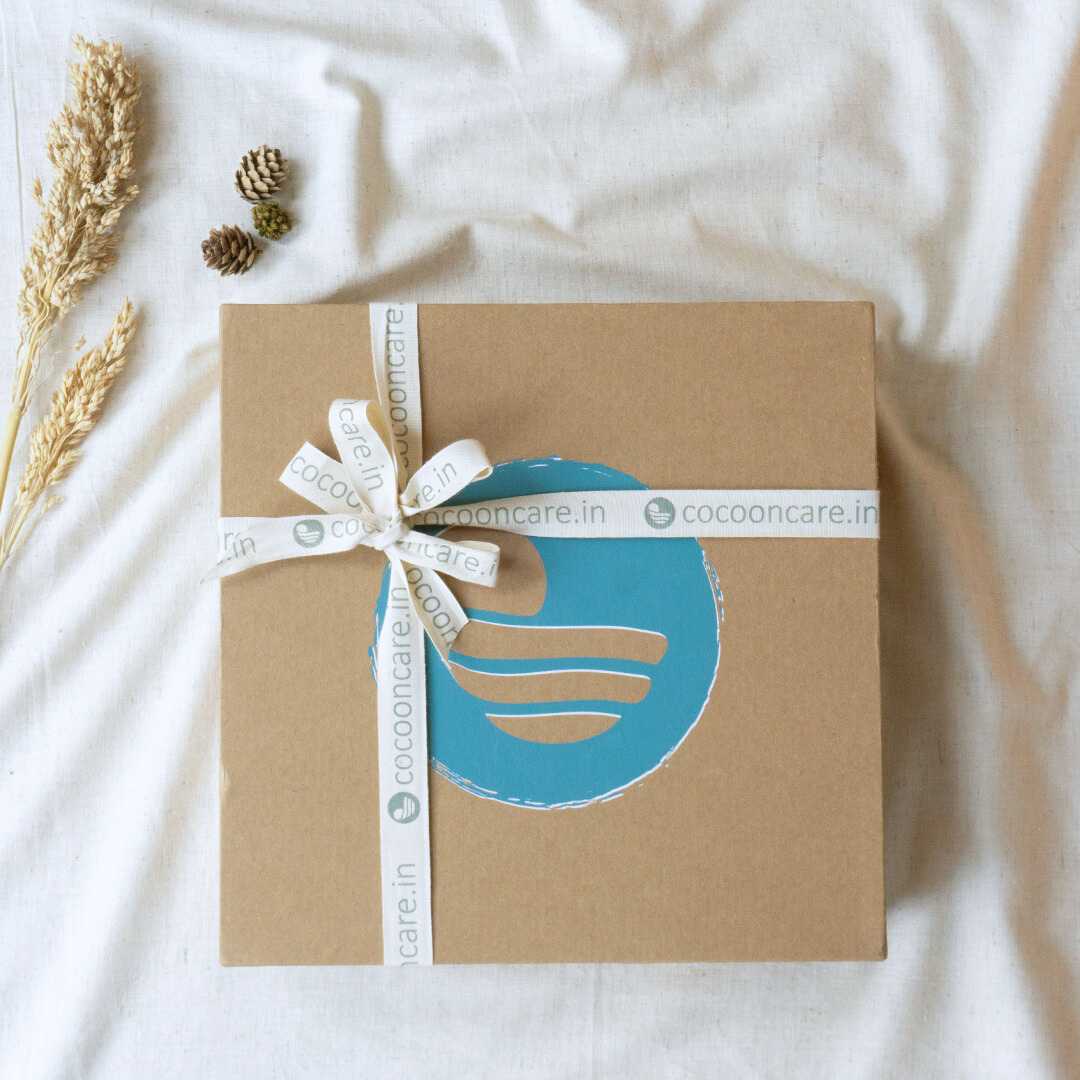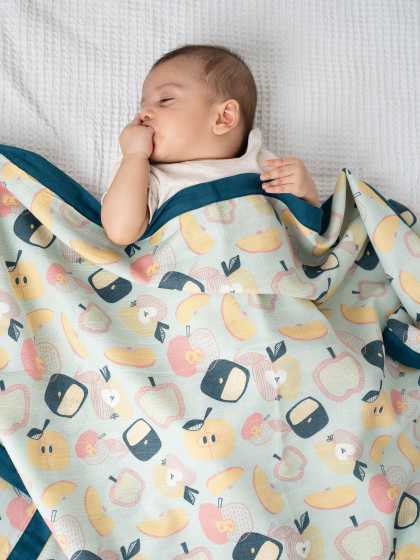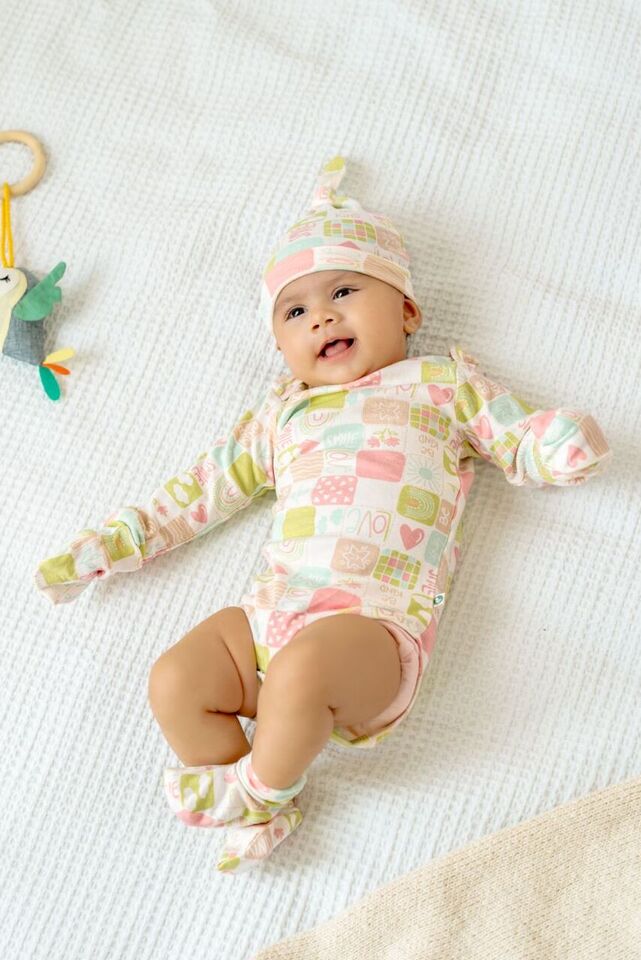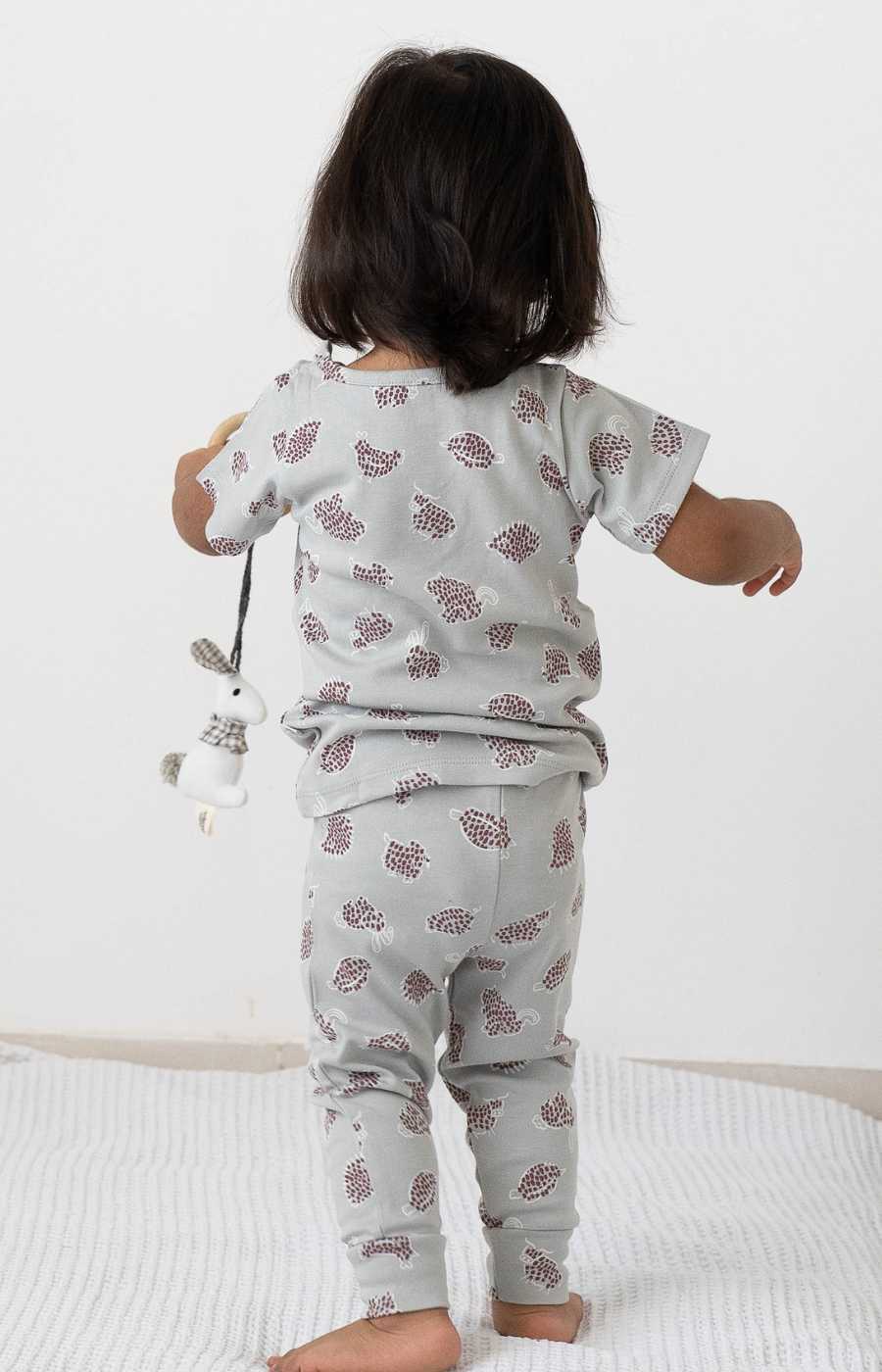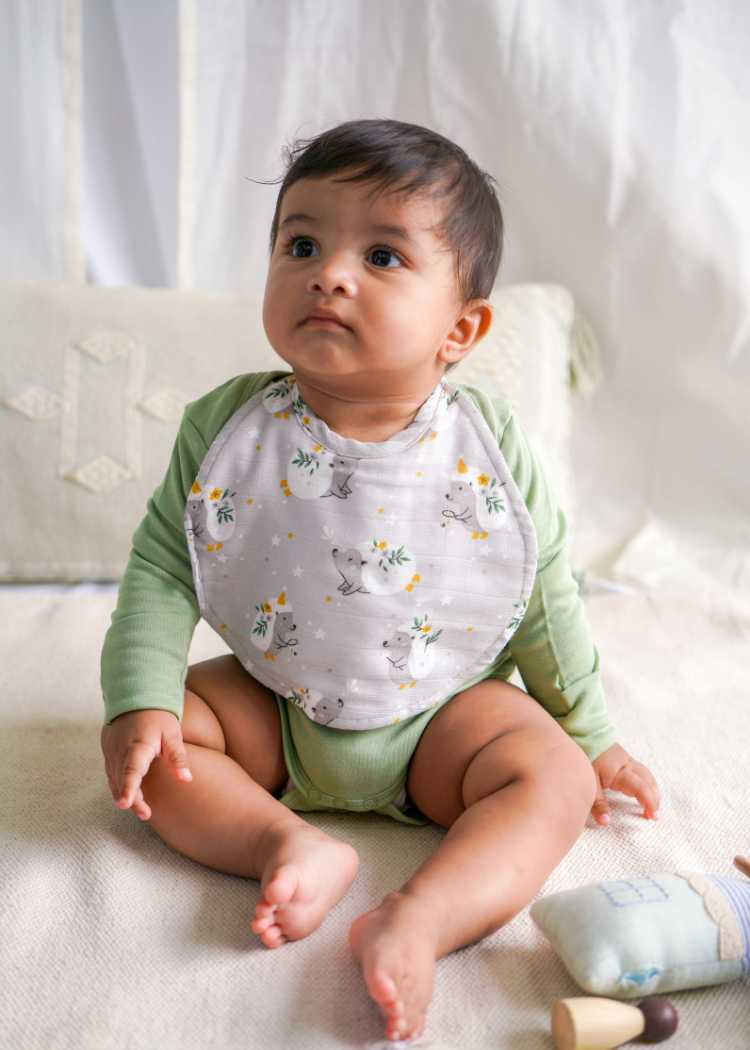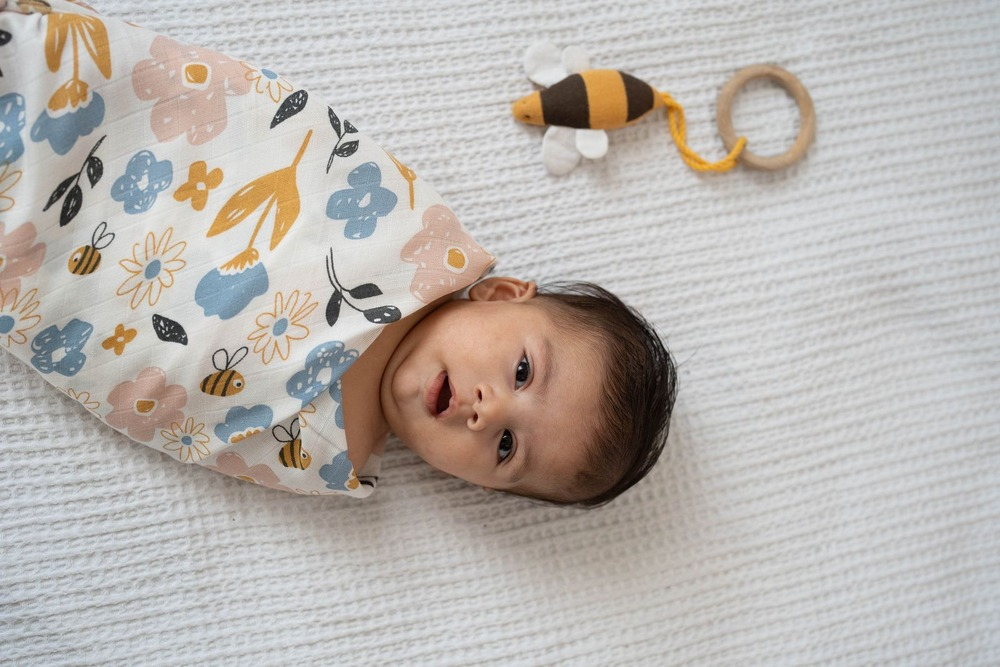Key Takeaways
- A newborn's sleep schedule is irregular, with short naps across day and night. The average newborn sleep hours are 14–17 daily, although how many hours newborns sleep varies from baby to baby.
- A newborn baby's sleeping time is spread throughout the day and night. Babies can stay awake only 45–60 minutes, and this short span is known as the wake window. Newborn sleeping time becomes structured with circadian rhythm development in babies.
- At 2 months, babies' sleeping hours are still 14–16 hours daily. Following a 2-month-old sleep schedule or a baby sleep schedule chart helps. Watching baby awake cues helps to prevent overtiredness, while gentle newborn sleep tips support healthy baby sleep patterns in the first year.
- Knowing infant wake windows by age makes naps easier. Expect sleep regression milestones as babies grow, and use a sample sleep schedule for a 3-month-old to see what’s next.
If you're holding your newborn and thinking, "Why are they already cranky? They just woke up," you're not alone. One of the most surprising things for new parents is just how little time a newborn can stay awake before needing to sleep again.
We have families who are waiting to play with them, or their bath time is a long process, and even though you are being mindful, you are struggling to understand your newborn’s sleep schedule, and that’s perfectly ok.
Let’s talk about something simple but powerful that can make a big difference in your baby’s sleep: awake windows.
What Are Awake Windows?
Awake windows are the amount of time your baby can comfortably stay awake between naps. In the first few weeks, this window is very short—usually about 45 to 60 minutes.
While following the awake windows, always ensure your first wake window is the shortest and move to 60 minutes gradually towards bedtime.
Sample Baby Sleep Schedule Charts
0–1 Month Old Baby Sleep Schedule
|
Category |
Details |
|
Wake Windows |
40 to 50 minutes |
|
Daytime Sleep |
6 to 8 hours |
|
Nighttime Sleep |
8 to 10 hours (with frequent wakings) |
|
Focus |
Feeding on demand, short awake times, skin-to-skin, rest |
Daily Routine Example
|
Time |
Activity |
|
7:00 AM |
Wake, feed, change |
|
7:40 AM |
Nap 1 |
|
8:30 AM |
Wake, feed |
|
9:15 AM |
Nap 2 |
|
Throughout |
5–6 naps total |
|
8:00 PM |
Begin bedtime routine |
|
8:30 PM |
Night sleep (waking every 2–3 hrs) |
2–3 Month Old Baby Sleep Schedule
|
Category |
Details |
|
Wake Windows |
60 to 75 minutes |
|
Daytime Sleep |
5 to 6 hours |
|
Nighttime Sleep |
10 to 12 hours (2–3 wakings) |
|
Focus |
Consistent nap routine, longer wake windows, bedtime predictability |
Daily Routine Example
|
Time |
Activity |
|
7:00 AM |
Wake, feed |
|
8:00 AM |
Nap 1 |
|
9:15 AM |
Wake, feed, short play |
|
10:30 AM |
Nap 2 |
|
Throughout |
4–5 naps total |
|
7:30 PM |
Bedtime sleep (3–4 hr feeds) |
** Above schedule is just a guideline of how the baby sleep schedule should look
Yes ! That includes everything: feeding, burping, diaper changes, and even cuddling. By the time you've done all of that, your baby might already be ready for sleep again. It's completely normal for newborns to sleep more than they are awake.
Why Newborn Sleeping Time Matters (But Don't Stress About It)
Newborns don't follow a predictable sleep schedule yet. Their internal clock is still developing, so sleep patterns can seem all over the place. Let me tell you that’s completely ok, as you understand your baby in the first few weeks.
When you are following the awake windows, you have to ensure that your baby has slept at the awake window time. e.g if you are following a 45-minute awake window, that would mean that your baby has slept 45 minutes after their wake-up. Most often, this is where parents tend to miss the awake window as they begin the process of sleep at 45 minutes, thinking they are following the awake window. This results in the baby getting overtired
Understanding baby awake windows can help you stay one step ahead of overtiredness, which often leads to fussiness and difficulty settling. Think of it as catching your baby before they hit a wall.
How to Know When Your Baby Is Ready to Sleep
Every baby is different, but some common signs of sleepiness include:
- Gazing off or looking away
- Reddish eyebrows
- Starting to fuss
- Yawning or rubbing eyes (these are usually later signs)
If you notice any of these, start helping your baby wind down. Even if it feels like they just woke up, that short window might already be closing. Timing might feel random at this stage, but what matters most is following your baby's cues.
But They Just Woke Up?!
Yes, this can feel confusing. You’ve just finished feeding, changed a diaper, maybe had a quick cuddle—and now they’re tired again.
This doesn't mean something is wrong. It means your baby is doing exactly what they need to do. Newborns need lots of short naps throughout the day to support rapid growth and brain development.
Be Gentle with Yourself Too
Awake windows are not about being perfect or sticking to a rigid routine. They're just a tool to help you understand your baby’s rhythm and make your days feel a little more manageable.
Instead of watching the clock too closely, try this approach:
- Observe your baby’s cues
- Keep the baby awake window in mind as a general guide
- Try to get your baby to sleep before they’re overtired
Some days will feel smooth, and others won’t. That’s completely normal.
Lastly Remember
You have just embraced parenting and welcomed your baby , in the early weeks, everything is new—for you and your baby. Learning about awake windows is one way to feel more confident and connected during this time.
If your baby seems sleepy again sooner than expected, trust it. Their little bodies and brains are doing so much growing. Responding to their cues now lays the foundation for healthy sleep habits later.
You’ve got this. And if you ever feel overwhelmed, reach out. You're not meant to figure it all out alone.
Gentle sleep begins with connection and trust—one tiny cue at a time.
Wishing You peaceful nights and joyful days
Bhakti Parikh
Peadiatric Sleep Coach
Founder – Nurturing The Slumber
@nurturingtheslumber
FAQs on Baby Sleep Time
-
How long should a newborn stay awake?
Most parents ask, How long should a newborn stay awake? The answer is short, about 45–60 minutes. These short spans are known as infant wake windows by age, and yes, feeding counts as part of their awake time.
-
What is a newborn's sleep schedule?
A newborn's sleep schedule isn’t fixed. Baby's sleep time is spread across naps and night stretches. As circadian rhythm development in babies begins around 2–3 months, sleep gradually becomes more predictable.
-
How many hours do newborns sleep?
If you’re wondering how many hours newborns sleep, most rest for 14–17 hours a day. These newborn sleep hours are broken into naps and night sleep, making up the total newborn baby sleeping time.
-
How much should a 2-month-old baby sleep?
On average, 2-month-old babies sleep hours are still 14–16 hours daily. Following a 2-month-old sleep schedule or even checking a baby's sleep schedule chart can give parents better structure.
-
What are awake windows for babies?
Awake windows are the short periods your baby is awake between naps. Knowing infant wake windows by age helps avoid overtiredness and ensures smoother newborn sleeping time.
-
How do I know if my baby is in the wake window?
Signs include yawning, fussiness, rubbing eyes, or losing interest in play. Spotting these cues helps plan baby sleep time and is one of the most effective newborn sleep tips.
-
Does feeding count as a wake window?
Yes. Feeding is part of the wake time and counts within the total newborn sleeping time. Understanding this also helps track baby sleep patterns first year.
About the author
Bhakti Parikh is a pediatric sleep consultant with over 6 years of experience and a mom who knows what it’s like to survive on little sleep. She’s supported 500+ families globally using gentle, responsive methods to build routines and help babies sleep independently.

